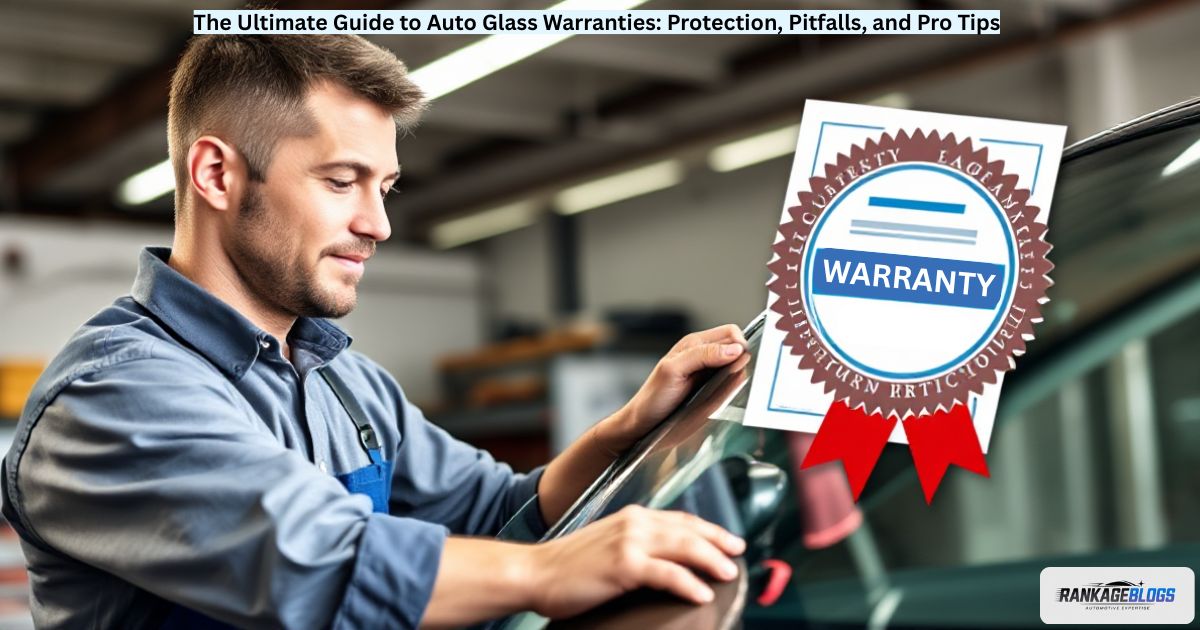An auto glass warranties are a vital safeguard that protects your investment after a windshield repair or replacement. Unlike insurance, which covers the impact event, this formal guarantee specifically addresses defects in material and faults in workmanship quality, such as leaks or improper installation. Understanding the nuances of your coverage, from its duration to specific exclusions, is crucial for ensuring long-term safety and value.
With modern vehicles relying on advanced systems calibrated to the glass, a robust warranty that includes ADAS recalibration is non-negotiable. Ultimately, this document is your assurance of comprehensive protection and peace of mind on the road.
1. Laying the Foundation: Auto Glass Warranty Basics
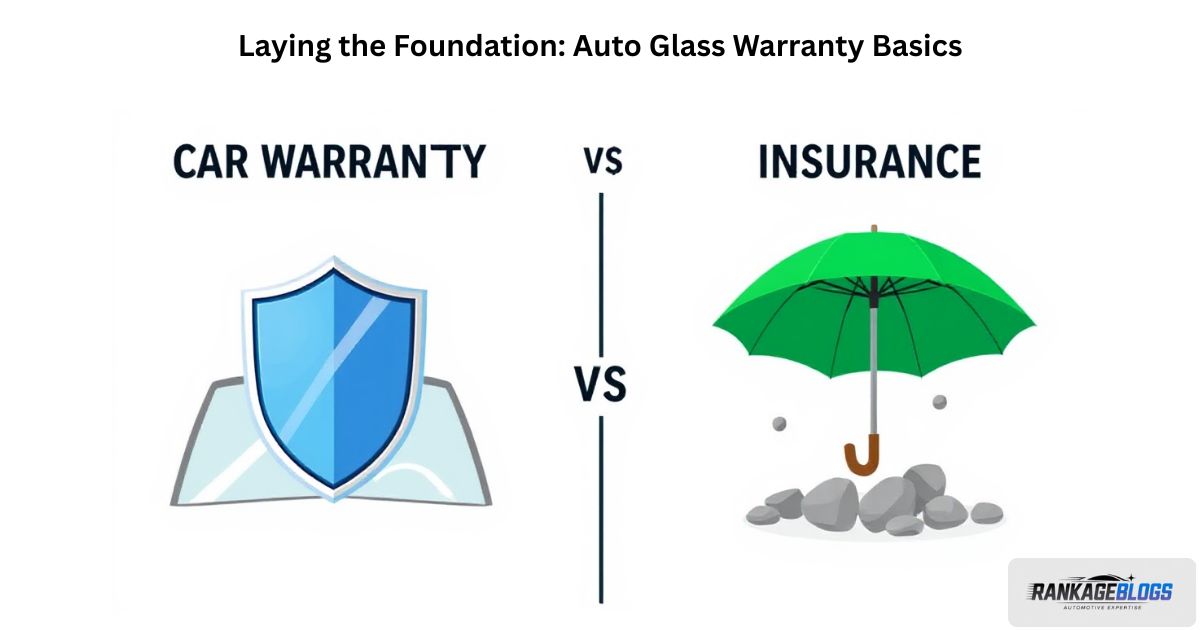
Before you can evaluate a specific offer, you need a rock-solid understanding of what an auto glass warranty actually is and the key players involved. This foundational knowledge separates informed consumers from those who simply hope for the best.
We will clarify the crucial difference between a warranty and insurance, introduce the different types of warranty providers, and decode all the essential terminology you will encounter. This clarity is your first and most important step toward getting the coverage you deserve.
1.1. What Exactly is an Auto Glass Warranty? (Beyond Insurance)
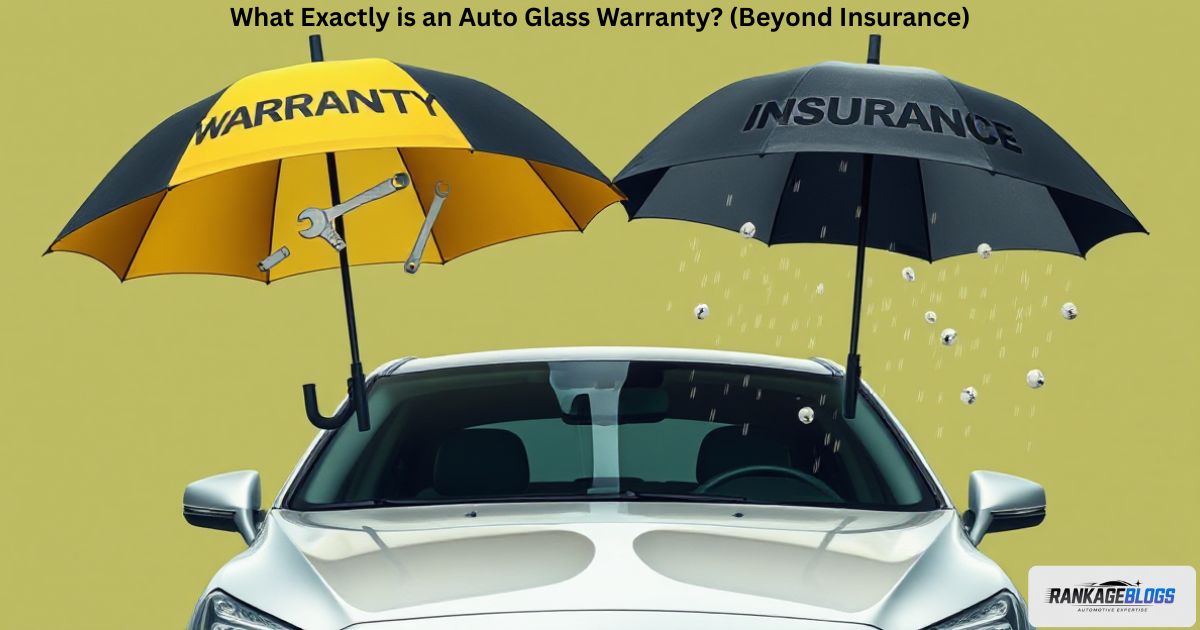
An auto glass warranty is a formal guarantee provided by an installer that covers defects in material and the quality of the workmanship performed during a repair or replacement. It is crucial to distinguish this from your car insurance.
Your insurance covers the event that caused the damage, like a flying rock or an accident. Think of it as an umbrella for a storm. The installer’s warranty, however, is a guarantee on the umbrella itself—it covers you if the stitching fails or the handle breaks after you receive it. You can use insurance to pay for the job and still be protected by the installer’s separate warranty on their work.
Every robust policy stands on two pillars: Parts/Materials Coverage (for the glass itself) and Labor/Workmanship Coverage (for the installation quality). A strong auto glass warranty will explicitly cover both a parts warranty and a workmanship warranty.
1.2. Who is Backing Your Warranty? Key Differences
Not all guarantees are created equal, and who provides yours matters immensely. A Manufacturer’s Warranty (OEM Glass) comes with your new car and covers the original factory-installed glass, typically for defects and for a short warranty period.
The Service/Installer Warranty, offered by the auto glass repair shop you choose, is the focus here. This is the promise that the job was done correctly, and its quality, coverage length, and scope can vary wildly from a small local operator to a major national chain like Safelite, Caliber Auto Glass, Glass Doctor, or Speedy Glass.
1.3. Glossary of Key Terms (Demystifying the Jargon)
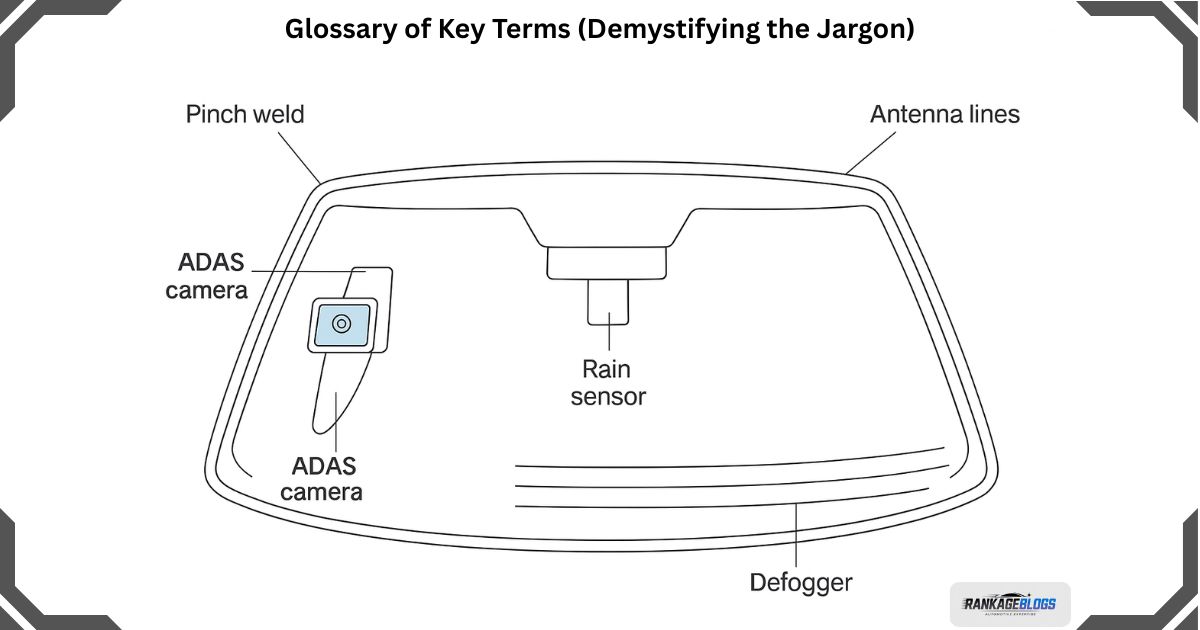
- Pinch Weld: The U-shaped channel of metal (the frame) on the car’s body where the edge of the windshield sits and is bonded with adhesive.
- Urethane Adhesive: The high-strength, flexible glue used to bond the windshield to the vehicle’s frame. It provides structural integrity and seals out the elements.
- Delamination: A defect where the layers of laminated glass begin to separate, often creating a cloudy or milky appearance.
- Optical Distortion: Wavy or imperfect areas in the glass that can blur or distort your vision, especially near the edges.
- Stress Crack: A crack that appears in the glass without a point of impact, usually caused by a manufacturing defect or improper installation pressure.
- ADAS (Advanced Driver-Assistance Systems): The suite of safety features (e.g., automatic emergency braking, lane departure warning) that rely on cameras and sensors typically mounted behind the windshield.
2. What’s Covered? A Deep Dive into Warranty Protection
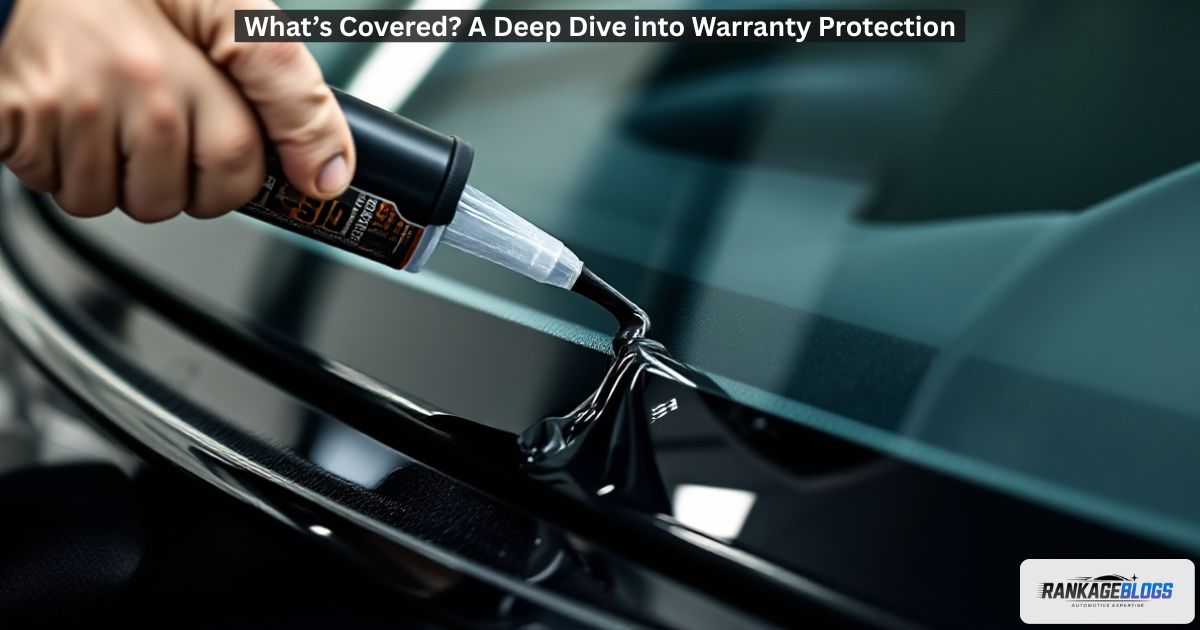
Once you grasp the basics, the next step is to dive deep into the specifics of protection. A truly valuable auto glass warranty acts as a meticulous safety net, designed to catch any and all problems that stem from the installation process or from faulty materials.
This section will detail every element that should be included under a robust policy, from preventing leaks and noise to guaranteeing the performance of modern safety systems. Knowing these details empowers you to hold your installer to the highest standard.
2.1. Workmanship & Installation Coverage (The “How” of the Job)
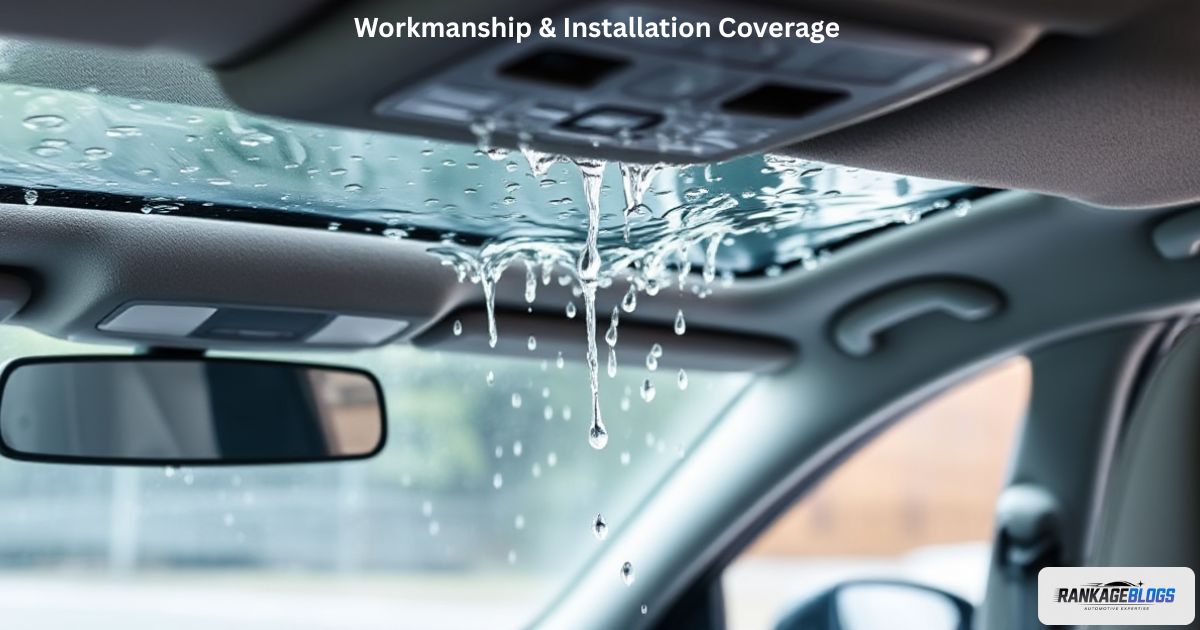
This part of the warranty covers errors made during the installation process. It specifically includes:
- Leaks: Both water leaks (leading to interior damage) and air leaks (causing whistling wind noise at speed).
- Improper Installation: Glass that is misaligned or not seated correctly.
- Molding/Trim Issues: Loose, misaligned, or poorly fitted moldings around the glass.
The “why” is rooted in the installation process. A proper seal depends on a flawless urethane adhesive bond and perfect moldings and trim alignment. This workmanship warranty protects you against installer error in achieving this, ensuring seal integrity.
2.2. Parts & Materials Coverage (The “What” of the Job)
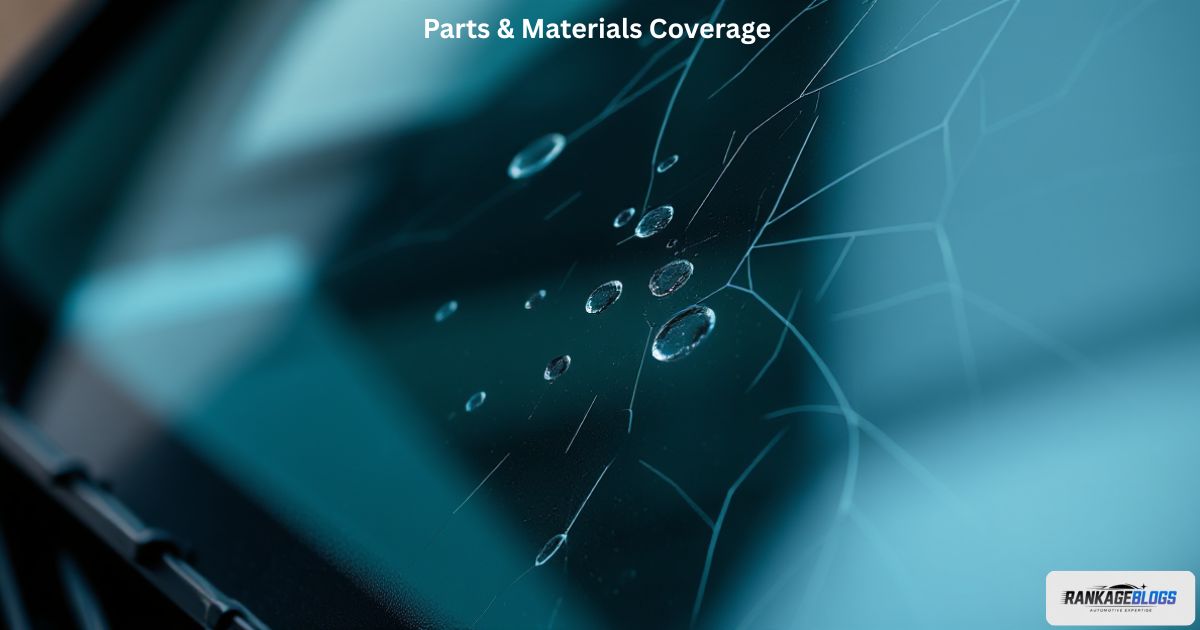
This coverage addresses defects in material in the physical glass itself. A strong parts warranty will cover:
- Delamination: The separation of the glass layers.
- Optical Distortion: Waviness that impairs vision.
- Stress Cracks: Cracks that form without any impact.
The type of glass matters greatly here. OEM glass vs aftermarket glass can influence the warranty terms. OEM (Original Equipment Manufacturer) glass is made by your car’s maker and typically has a lower likelihood of material defects. Aftermarket glass, while often less expensive, can sometimes have a higher potential for issues like optical distortion, which may be reflected in the warranty’s terms. A specific windshield replacement warranty should always clarify this.
2.3. The Modern Essential: ADAS Recalibration Warranty
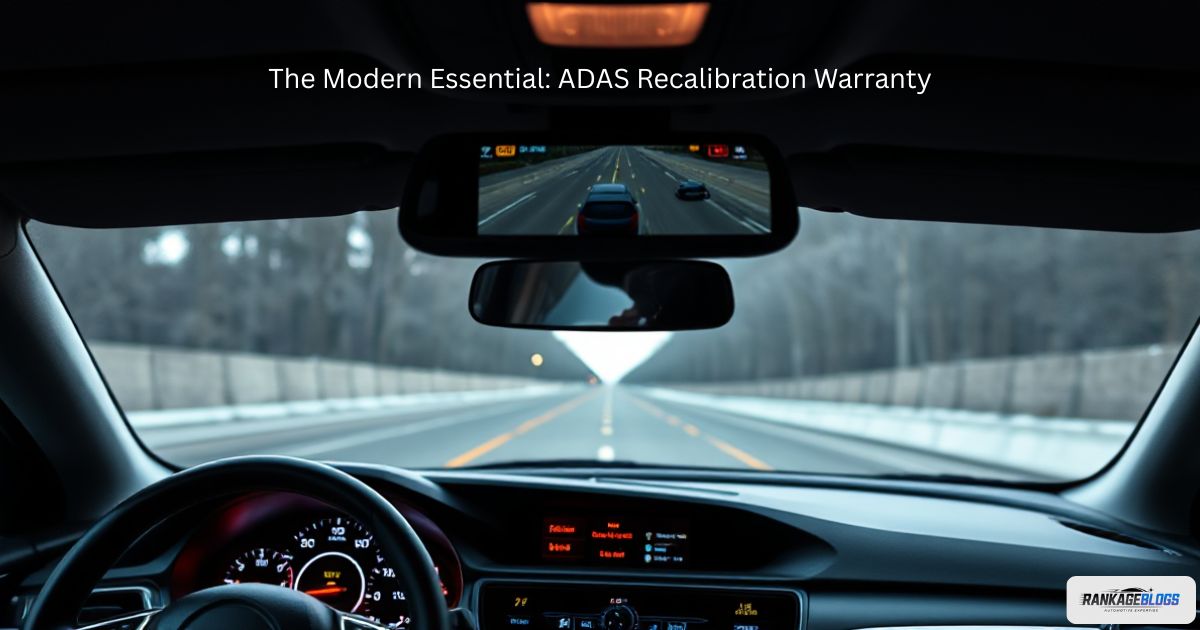
This is arguably the most critical component of a modern auto glass warranty. After a windshield replacement, the cameras and sensors for your ADAS (Advanced Driver-Assistance Systems) must be precisely recalibrated. A faulty ADAS calibration can disable crucial safety features like automatic emergency braking or lane-keeping assist, potentially leaving you with an ADAS features inoperative.
A strong warranty will explicitly cover ADAS recalibration. It should guarantee that the initial sensor calibration was performed correctly and will cover the labor and parts to re-calibrate the system at no charge if it malfunctions due to the installation or a defective part. This is non-negotiable for modern vehicles.
2.4. Related Components and Features
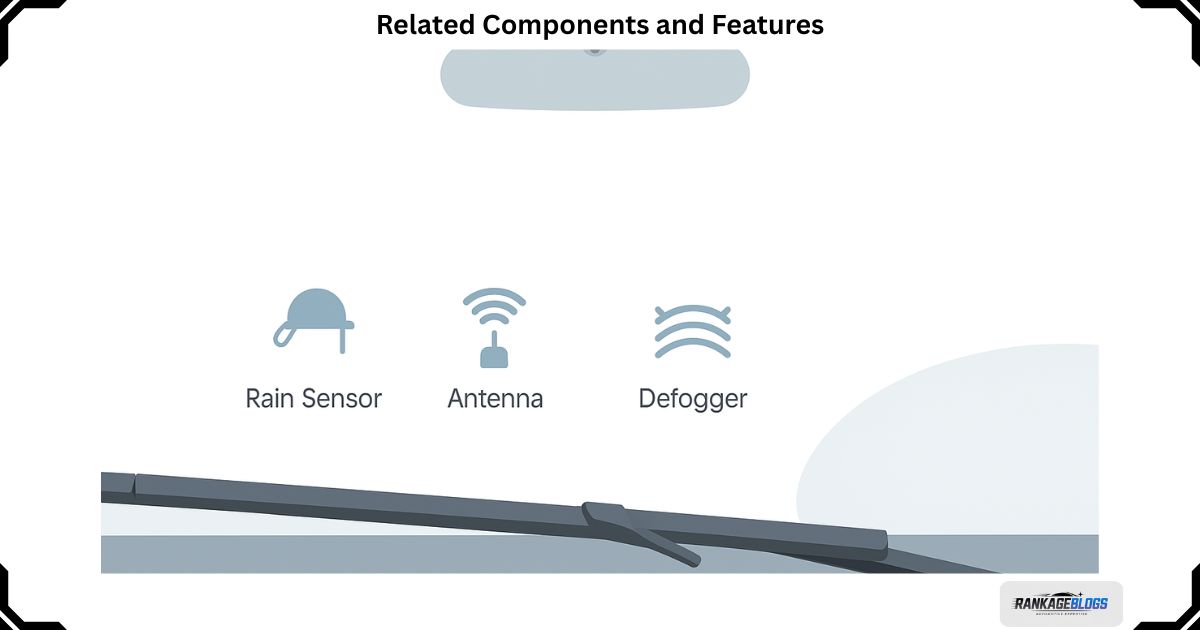
A quality installation involves working around delicate components. A comprehensive warranty should also cover elements embedded in or connected to the glass that could be affected during the work, such as:
- Defogger mechanisms (rear window heating elements)
- Radio antenna amplifiers embedded in the glass
- Rain sensors and automatic wiper mechanisms
- Moldings and trim attached to the glass
2.5. Lifetime Chip Repair Guarantee
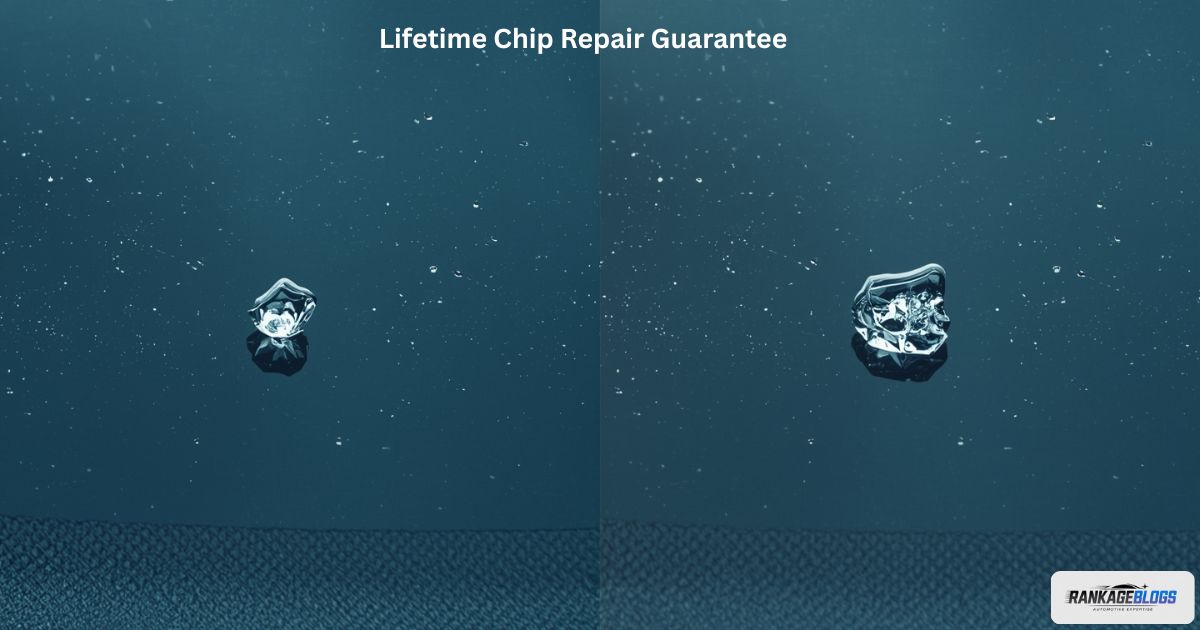
This is specific to windshield repairs, not full replacements, and is often a separate windshield repair warranty. It is a guarantee that the repaired chip or crack will not spread under normal conditions and that the repair will be sufficient to pass state inspection. If the crack does propagate, a reputable shop will typically offer a credit toward replacement.
3. Maximizing Your Auot Glass Warranties: Duration, Transferability, and Scope
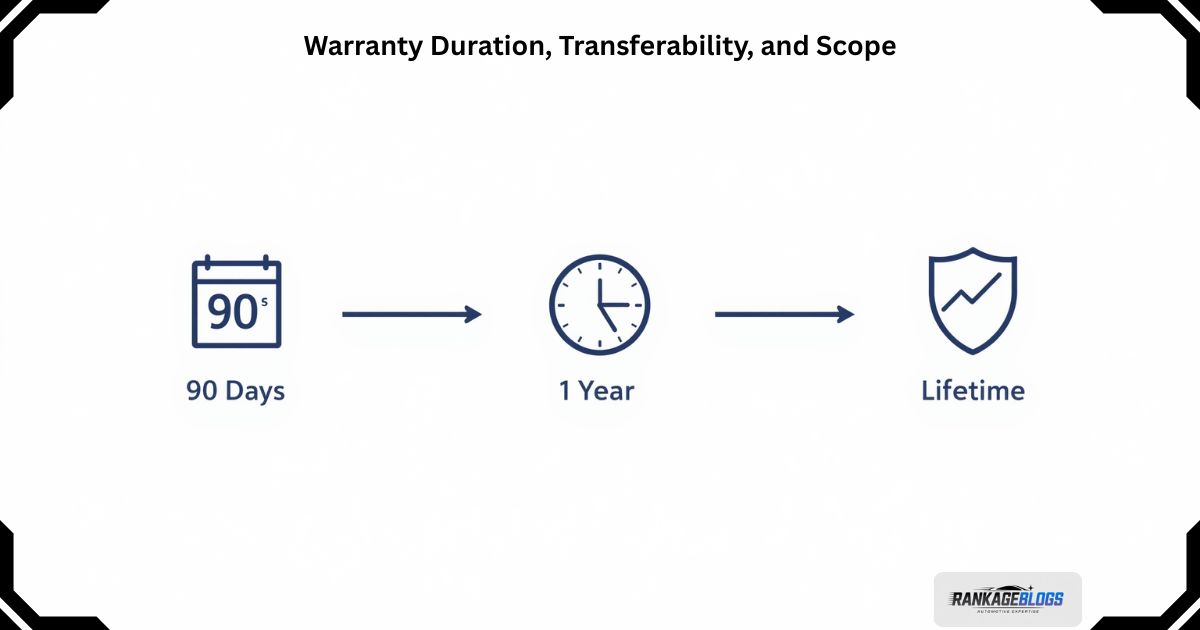
The substance of your coverage is vital, but its longevity and flexibility determine its real-world value. A lifetime guarantee means little if it’s voided when you move to a new state or doesn’t transfer to the next owner of your car. This section breaks down the timeframes, portability, and special conditions that define the scope of your auto glass warranty, ensuring you understand not just what is covered, but for how long and under what circumstances.
3.1. The Lifespan of Auto Glass Warranties: Decoding “Lifetime”
The warranty duration varies significantly. For repairs, guarantees often range from 90 days to a lifetime warranty. For full replacements, common terms are one year, three years, or lifetime. It’s vital to read the specifics, as some offers may be a limited warranty with specific conditions.
The Critical Meaning of “Lifetime”: This common term is often misunderstood. You must ask: “Lifetime of what?” In almost all cases, a lifetime warranty means for the lifetime of your ownership of the vehicle. It is typically non-transferable, meaning the coverage expires the moment you sell the car.
The Gold Standard: Transferable Lifetime: A more valuable, though much rarer, option is a Transferable Lifetime Warranty. This can be officially passed on to the next owner of the vehicle, acting as a strong selling point and protecting your investment’s resale value. Always confirm the exact meaning of “lifetime” with your installer.
3.2. The Gold Standard: Nationwide and Transferable Coverage
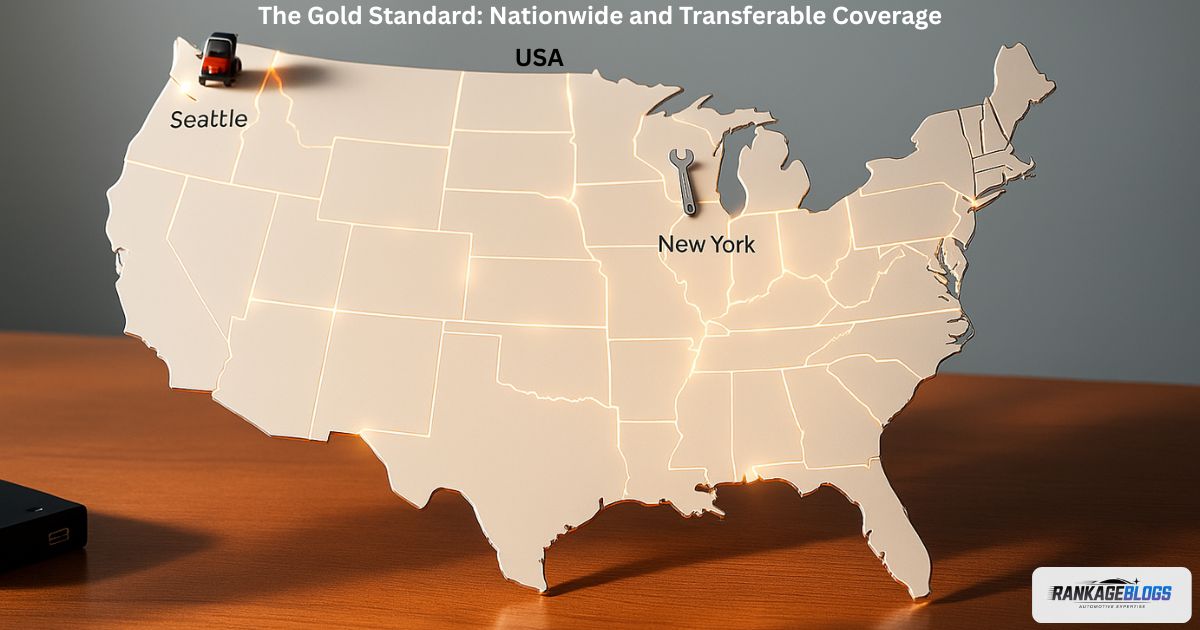
A Nationwide Warranty is a huge advantage, especially from chains like Safelite or Caliber Auto Glass. It means you can get warranty service honored at any of their franchise locations across the country.
This is essential if you travel frequently, move to a new city, or if the original shop you used goes out of business. Similarly, a transferable warranty adds tangible value to your vehicle, making it a strong selling point by offering the new owner continued protection.
3.3. Special Considerations: Fleet and Commercial Vehicles
Standard consumer warranty terms are almost never designed for the intense demands of business use. If you own fleet vehicles, commercial trucks, rental cars, or use a vehicle for ride-sharing (Uber, Lyft), expect drastically different and more limited coverage.
These commercial policies are built for higher wear-and-tear and frequently feature severely shortened durations. It is common for the comprehensive “Lifetime” warranty to be void, replaced by a limited policy of 90 days to 1 year. Coverage may also explicitly exclude common commercial issues or require a separate commercial service agreement.
Pro Tip: Transparency is critical. Always disclose the intended commercial use of the vehicle to the installer before the work begins. Assuming your personal auto glass warranty will cover a taxi or delivery van is a common and very costly mistake. Request the commercial warranty terms in writing to avoid unexpected denials later.
4. What’s NOT Covered: Understanding Exclusions and Limitations
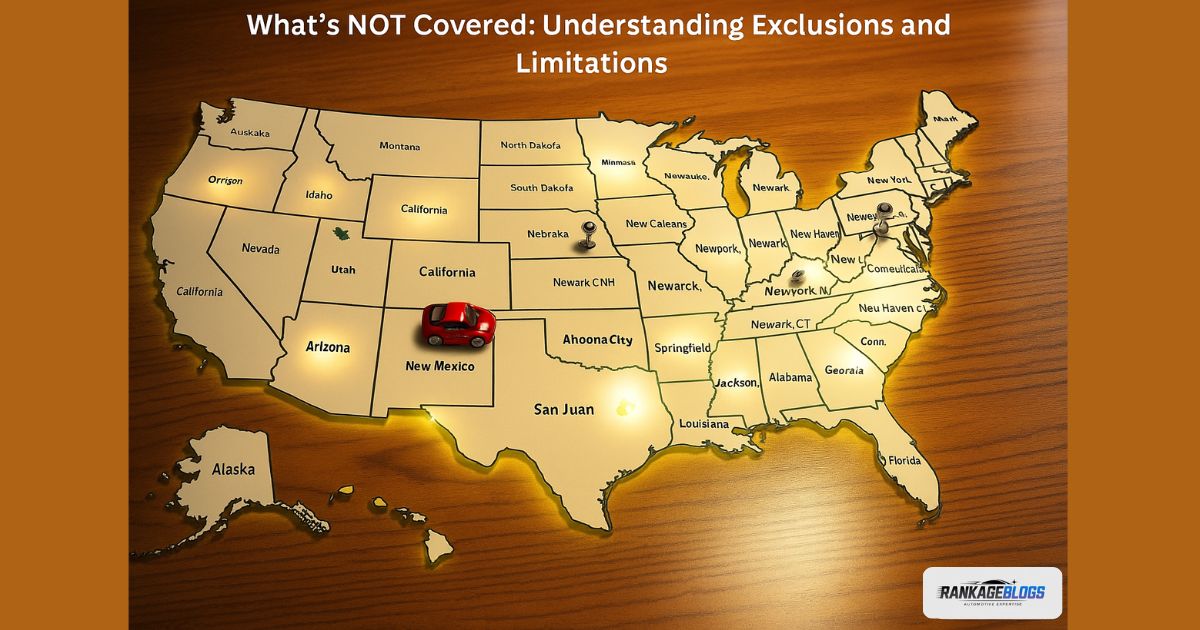
A truly comprehensive understanding of your auto glass warranty requires a thorough look at its limitations. The exclusions define the boundaries of the installer’s responsibility and highlight your own.
Examining these details prevents future disputes and frustrations, ensuring you have a completely clear picture of what the warranty will and will not do for you. This knowledge is just as important as knowing what’s covered.
4.1. Common Exclusions
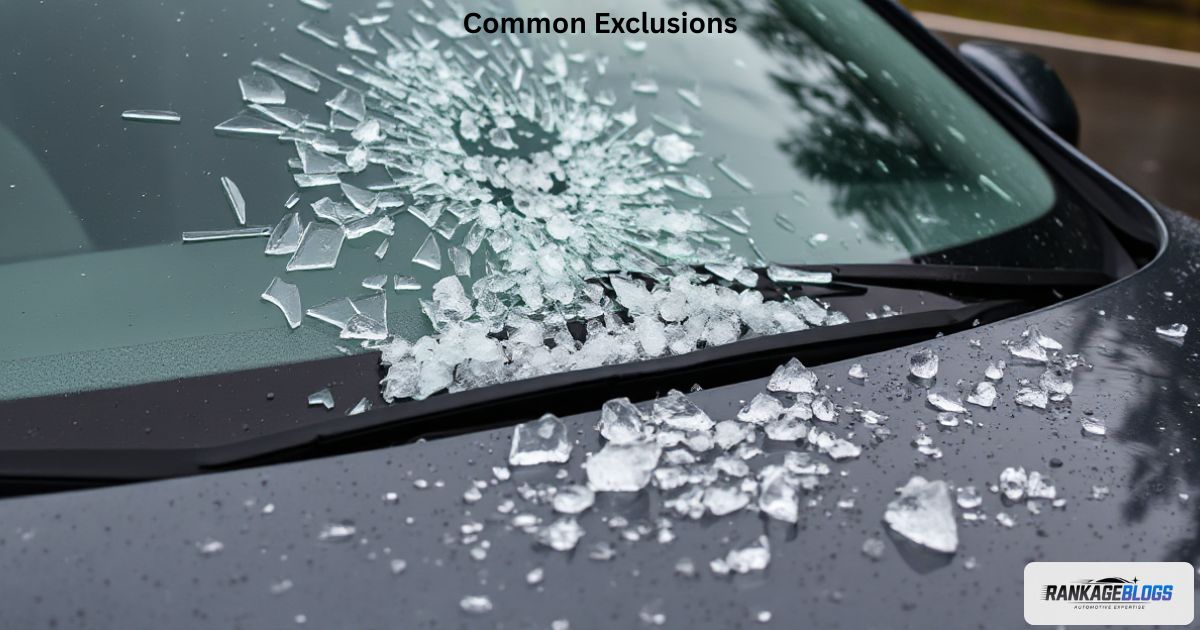
- Pre-existing Damage: This is a major exclusion. Rust on the pinch weld (often called pinchweld damage), existing body damage, or old adhesive residue from a previous installation are your responsibility to repair. This is why a pre-installation inspection is critical.
- New Impact Damage: Your warranty is not insurance. It will not cover new rocks, accidents, or vandalism. Those are separate insurance claims.
- Consequential Damages: Most warranties will not cover related costs like a rental car, lost wages, or water damage to your vehicle’s interior caused by a leak. These are known as incidental damages.
- “Acts of God”: This legal term refers to unavoidable natural events like a hailstorm or a tree branch falling on your windshield after the installation.
4.2. How You Can Void Your Warranty
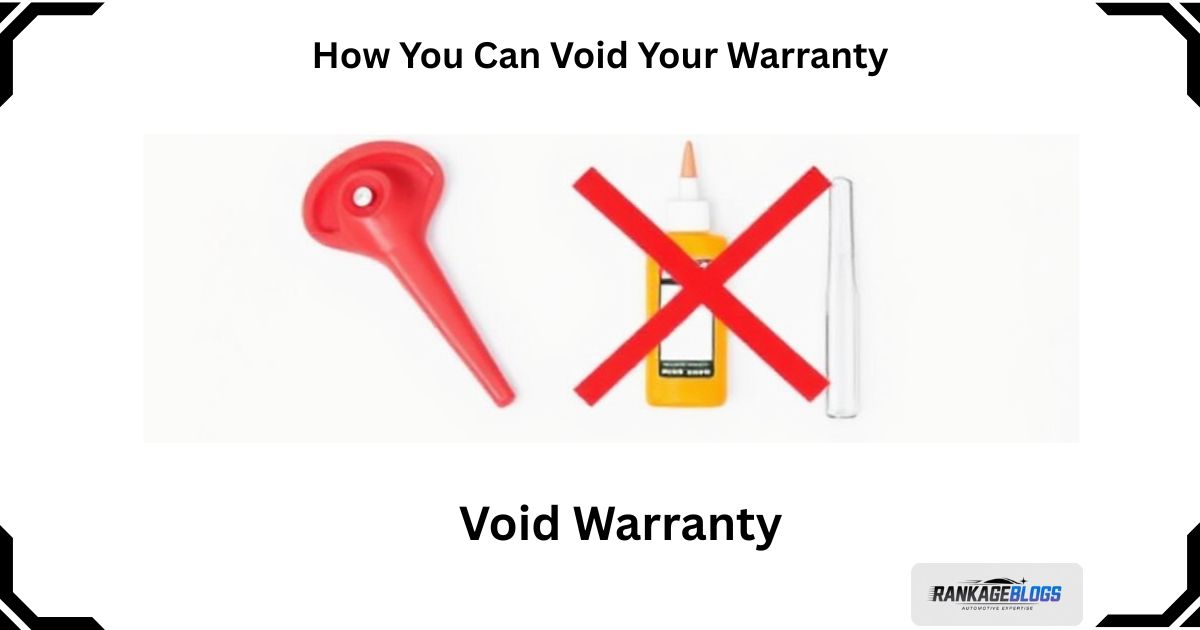
You can nullify your coverage through specific actions:
- DIY Repairs: Attempting DIY fixes for a leak or issue yourself.
- Using non-approved chemicals, like ammonia-based cleaners on tinted glass.
- Having another shop perform subsequent work on the installation.
- Arbitration Clauses:Many warranties include a binding arbitration clause. This is a legally significant provision where you agree to resolve any disputes with the installer through arbitration—a process with a neutral third-party arbitrator—instead of filing a lawsuit in court.
What This Means For You:
- Process:Arbitration is generally faster and less formal than a court trial.
- Drawbacks:The arbitrator’s decision is typically final and binding, with very limited options to appeal. By agreeing to this clause, you are likely waiving your right to sue in court and to participate in a class-action lawsuit.
- Your Rights:You often have a short window (e.g., 30-90 days after purchase) to formally opt-out of the arbitration clause by sending a written notice to the address specified in the warranty document. Doing this preserves your full legal rights. For a major dispute, consider consulting a consumer protection attorney to understand the implications.
4.3. Red Flags: Signs a Warranty is Too Good to Be True
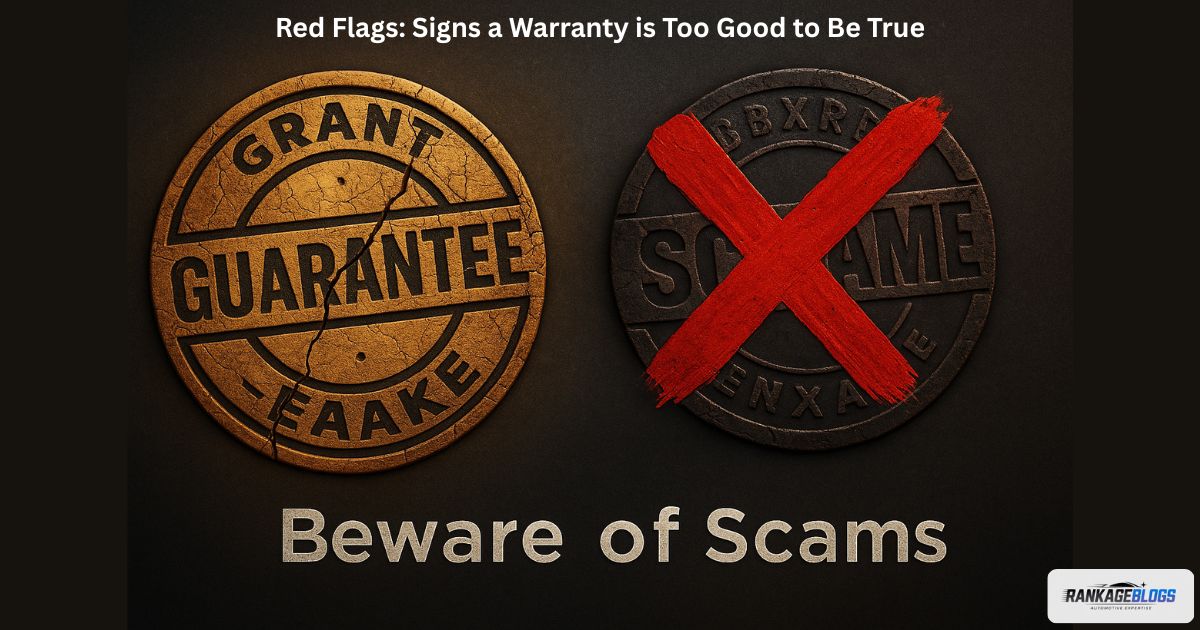
Be wary of offers that:
- Use overly vague language with no specific written details.
- Have extremely short durations, like 30 days.
- Promise to cover “everything” without listing clear warranty exclusions.
- The installer refuses to provide the warranty terms in writing before the work begins.
5. The Consumer Advocate’s Action Plan
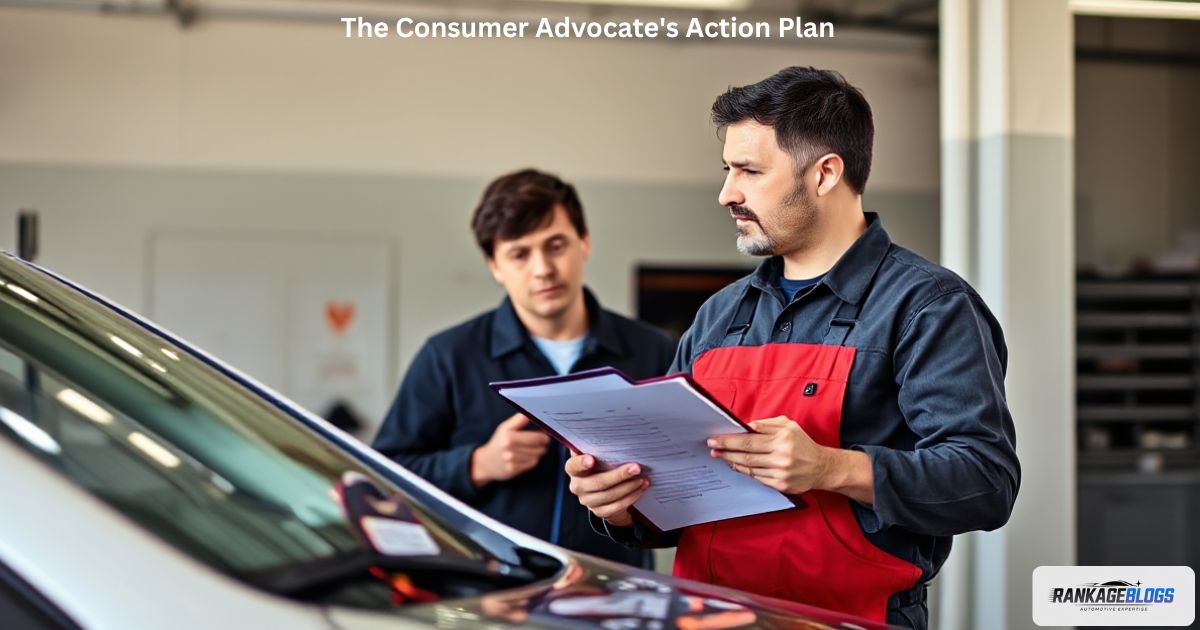
Knowledge is power, but action is results. This section transforms you from an informed reader into an empowered consumer. With the right questions and checklists, you can negotiate effectively, choose the best installer, and verify the work yourself, ensuring your auto glass warranty is a powerful tool, not just a forgotten document.
5.1. Pre-Installation: How to Ensure a Strong Warranty
Don’t just accept the standard offer. Warranty terms can sometimes be negotiated, especially on higher-priced jobs or for fleet accounts. Always ask if better terms are available.
Most importantly, conduct a pre-installation inspection with the certified technician. Walk around your vehicle and physically point out any pre-existing rust on the pinch weld, paint chips on the roof or pillars, or interior dashboard damage. Get their acknowledgment of this pre-existing damage to avoid any future disputes about what was already there.
5.2. 10 Critical Questions to Ask ANY Installer Before You Agree
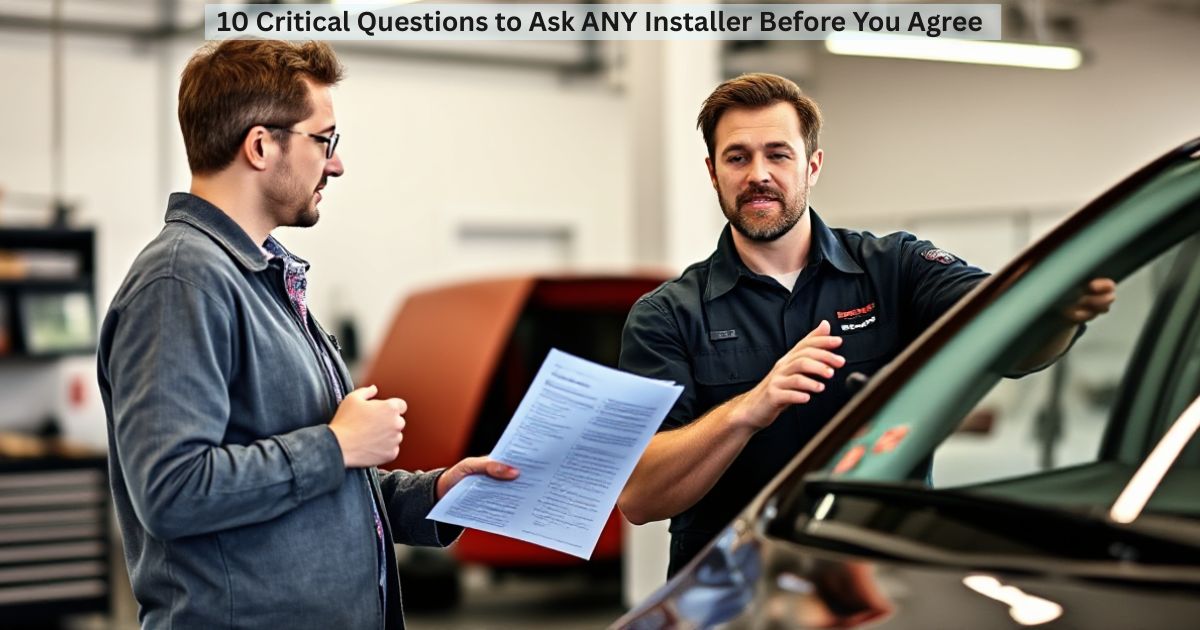
- Is your warranty nationwide? At which specific locations can I get service?
- Does it cover both parts and labor separately and fully?
- What is your specific, written policy on ADAS recalibration warranty?
- Is the warranty transferable if I sell my car?
- What are the top three exclusions in this warranty?
- What is the adhesive drive-away time? (This is the cure time; how long before my car is safe to drive in rain or through a car wash?)
- What is the process for filing a warranty claim? Who do I call directly?
- Do you cover related components like my radio antenna or defroster?
- (For older cars) Can you check for hidden pinch weld rust beforehand to avoid surprises and disputes over pre-existing damage?
- How do you handle disputes? Is there a binding arbitration clause in the warranty agreement?
5.2.1. Warranty Tiers at a Glance: National Chains vs. Local Shops vs. Dealerships
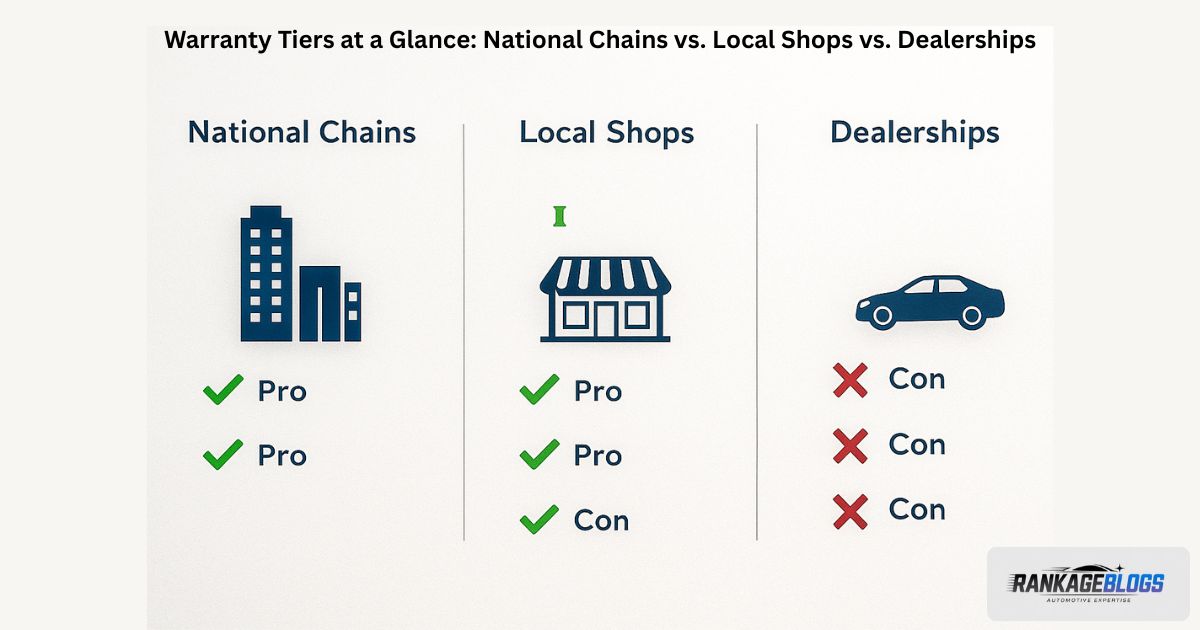
“To help you visualize the typical landscape of warranty offers, here is a general comparison. Remember, always confirm the exact terms with your specific installer.”
Feature | National Chain (e.g., Safelite) | Local Independent Shop | Car Dealership |
Typical Duration | Often “Lifetime” | 1-3 Years | 1 Year (OEM Parts) |
| Nationwide Honor | Yes (Key Advantage) | Rarely | Yes (at other same-brand dealers) |
ADAS Coverage | Usually Included | Varies Widely | Usually Included |
Transferable | Sometimes (for a fee) | Rarely | Sometimes |
Parts Type | OEM or Aftermarket | OEM or Aftermarket | OEM Only |
| Potential Cost | Medium | Often Low | High |
5.3. Post-Installation: The Ultimate Inspection Checklist
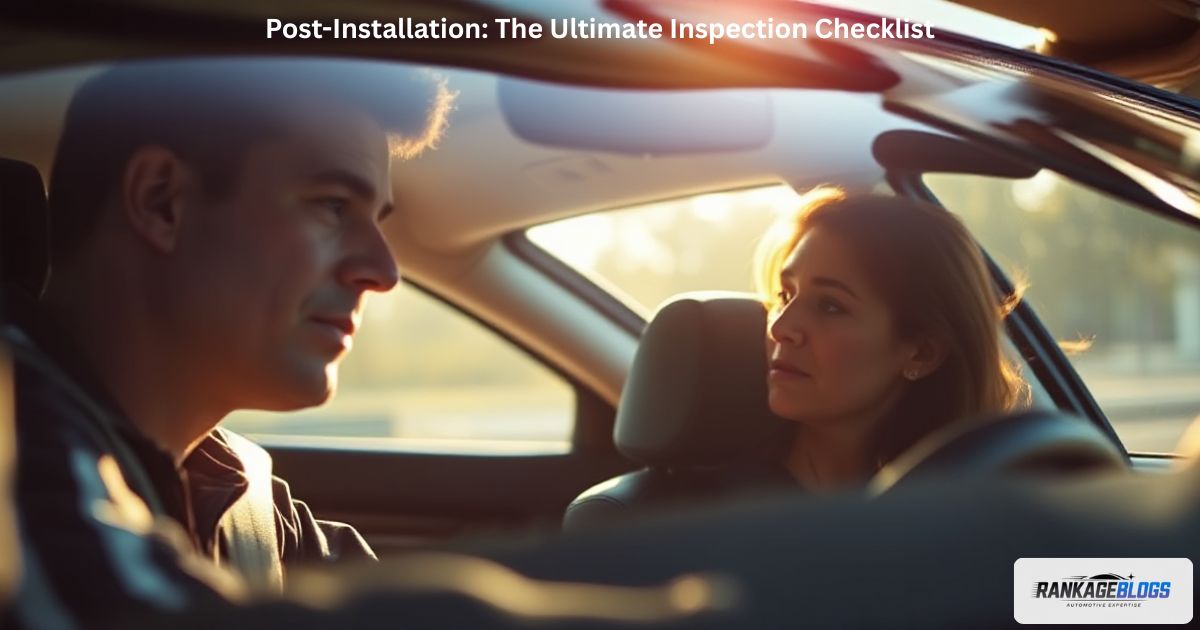
Before you even leave the shop parking lot or immediately after getting home, run through this checklist to verify the work:
- Physical Inspection: Check for gaps in the sealant around the entire edge of the glass. Ensure all moldings and trim are flush, aligned, and securely clipped in. Look for any new scratches on the dashboard or paint.
- Function Test: Test the defogger mechanism, radio reception (if the antenna is in the glass), and automatic wipers/headlights. Operate all power windows.
- Visual Check: From the driver’s seat, look for any optical distortion (waviness), especially near the edges.
- Pro Tip: How to Test for Distortion: An easy way to check is to hold a straight object, like a pen, or a piece of paper with straight lines on it, and slowly move it across your field of vision through the windshield. Alternatively, look at a long straight line in the distance, like a telephone pole or the edge of a building. If the line appears to bend, warp, or ‘swim’ as you move your head, there may be optical distortion in the glass.”
- Seal Test: Drive the car at highway speeds and listen carefully for any whistling or wind noise that wasn’t there before.
- ADAS Verification: In a safe, controlled environment like an empty parking lot, test key ADAS features like Lane Departure Warning or Forward Collision Warning to ensure they are functioning correctly.
6. Navigating the Claims Process: A Step-by-Step Guide
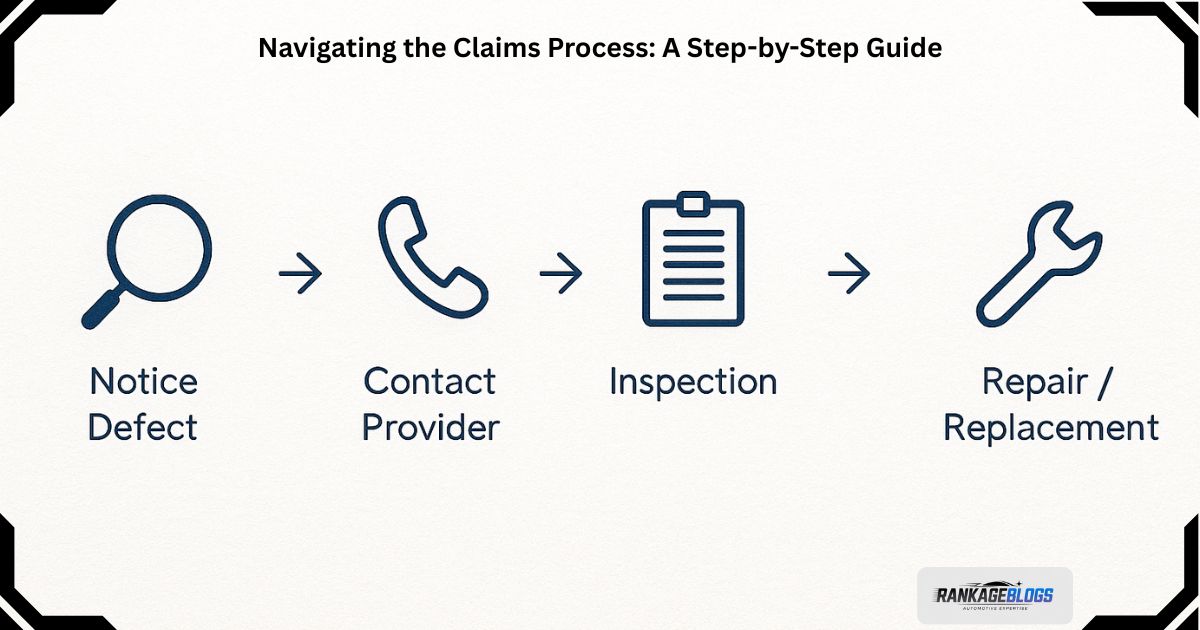
Even with the best preparation, you might need to make a warranty claim. Knowing this process inside and out eliminates stress and ensures a swift resolution.
- Step 1: Act Immediately. Do not delay. Most policies require you to notify within 30 days of noticing the issue. This is often a strict term.
- Step 2: Gather Your Documents. Locate your original invoice and your vehicle’s VIN. Take clear, well-lit photos or videos of the problem (e.g., the leak, the distortion, the crack).
- Step 3: Make the Initial Call. Contact the original install location directly or their dedicated national claims number if they are a chain. Have your invoice available to provide your job number and details quickly.
- Step 4: Schedule the Mandatory Inspection. This is a critical step. The shop must inspect vehicle damage to approve any claim. This means you must bring the vehicle back to the shop (or an approved partner location) for a technician to assess the issue in person. They need to verify it’s a warrantable defect and not new damage or an excluded issue.
- Step 5: Understand and Authorize the Resolution. Once approved, get a clear description of the remedy. Will they repair a seal, re-calibrate the ADAS features, or perform a complete windshield replacement? Ensure the solution aligns with the promises of your auto glass warranty before any work begins.
Conclusion: Your Peace of Mind is the Priority
The right auto glass warranty is not just a piece of paper; it’s a promise of safety, quality, and peace of mind. It is the installer’s pledge that they stand behind their work with robust coverage.
By asking the right questions, understanding the fine print, and choosing a provider who offers a strong, nationwide warranty, you do more than just fix your glass—you protect your vehicle’s integrity and your investment. A thorough understanding of your auto glass warranty ensures you can drive away with confidence, knowing you are fully protected against defects in workmanship and materials.
By following this guide, you ensure not just a repaired windshield, but long-term peace of mind as a driver.
Don’t just get a new windshield; get the unwavering confidence that comes with it.
FAQs
Is there a warranty on auto glass?
Yes, installers provide a separate warranty on their workmanship and the parts they install, which is different from your car insurance.
What is the warranty on auto glass now?
It typically covers defects in workmanship (like leaks) and materials (like distortion), often lasting from one year to a lifetime, depending on the installer.
Is there a warranty on Safelite auto glass?
Yes, Safelite offers a strong nationwide lifetime warranty on their workmanship for as long as you own your vehicle.
Can a cracked windshield be covered under warranty?
Only if the crack is due to a defect in the glass or installation error; it is not covered if caused by a new rock chip or impact.
Does claiming a cracked windshield affect insurance?
In most states, a glass claim is considered a “no-fault” claim and should not directly cause your insurance rates to increase.
How much does it cost to fix a cracked windshield?
A simple repair can cost $50-$150+, while a full replacement typically ranges from $200-$1,000+, depending on the vehicle and glass type.
What are the best auto glass warranties available?
The best warranties are “lifetime,” nationwide, and explicitly include coverage for ADAS recalibration, like those from major national chains.
Which companies offer windshield warranty coverage?
Most installers do, but the most comprehensive coverage comes from national chains like Safelite, Caliber Auto Glass, and Glass Doctor, as well as new car dealerships.

